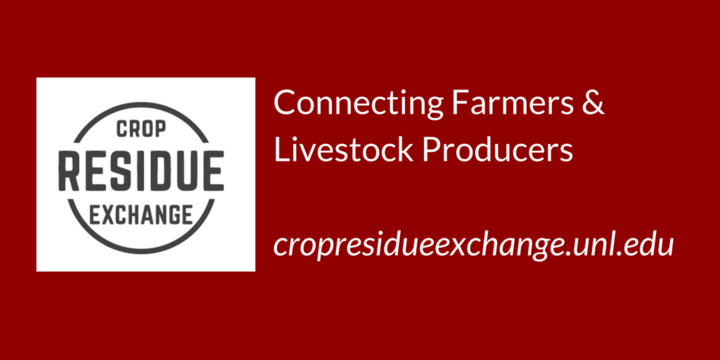
The Crop Residue Exchange is an interactive, online tool designed to help farmers and cattle producers connect and develop mutually beneficial agreements for using crop residue for grazing. A recent UNL survey funded by USDA Sustainable Agriculture Research and Education showed that 17% of farmers list lack of access to cattle as the major reason cattle aren’t used to graze residue on their farmland. This new online exchange serves as a way for corn and other crop producers to market their crop residue to cattle producers.
The Crop Residue Exchange is available online at http://cropresidueexchange.unl.edu. After establishing a log-in account, farmers can list cropland available for grazing by drawing out the plot of land available using an interactive map and entering in basic information about the type of residue, fencing situation, water availability, and dates available. They also provide their preferred contact information. Livestock producers can log in and search the database for cropland available for grazing within radius of a given location of interest.
While the primary objective of this exchange is to assist in the development of farmer-cattle producer relationships, it’s expected that in the near future the exchange will provide educational material and tools to support these relationships. Items under development include
- a lease template to help cattle owners and farmers develop a contract;
- links to tools and guidelines to help farmers and cattle owners correctly stock crop residue fields, and
- summary information on crop residue grazing rates.
These tools will be available to all registered users of the exchange.
Development of the Crop Residue Exchange was made possible with funding support from the Nebraska Extension Innovation Grants Program.

Grazing Corn Residue: A Win-Win for Crop and Cattle Producers

